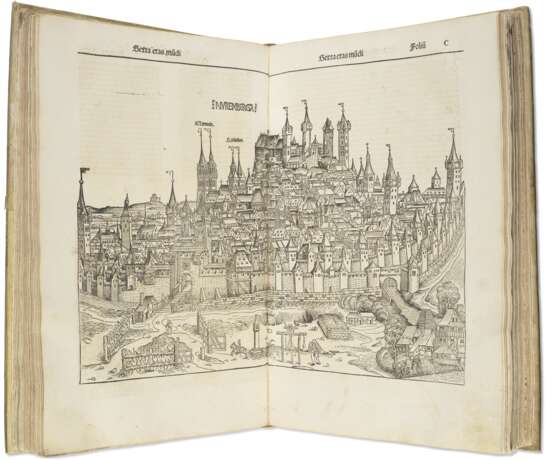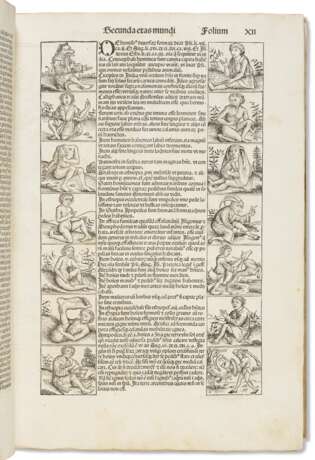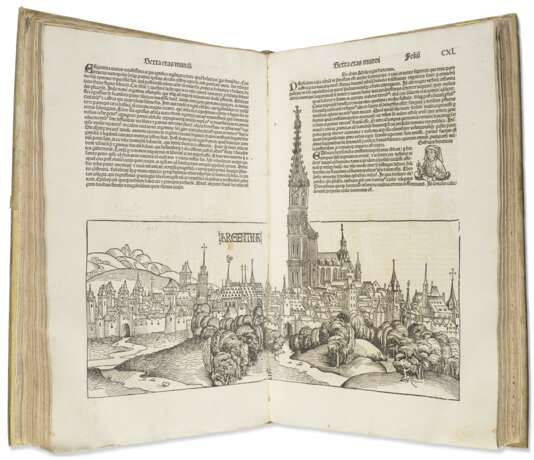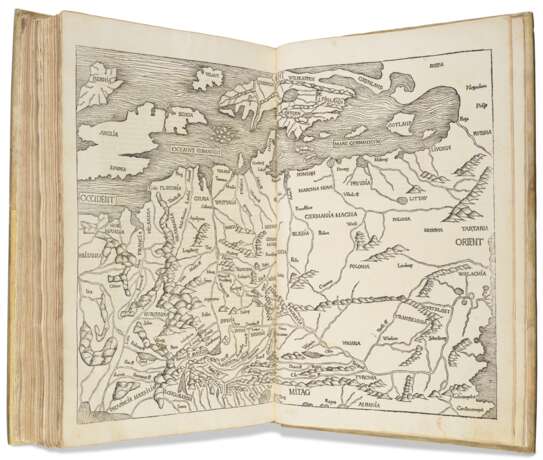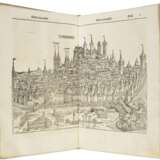ID 627495
Lot 7 | Nuremberg Chronicle
Estimate value
$ 20 000 – 30 000
First edition of the most extensively illustrated book of the 15th century. The Nuremberg Chronicle is celebrated for its fine and numerous woodcut illustrations, to which Albrecht Dürer is believed to have contributed. The publication history of the Nuremberg Chronicle is perhaps the best documented of any book printed in this period: the contracts between Schedel and his partners Schreyer and Kammermaister, and between Schedel and the artists, all survive in the Nuremberg Stadtsbibliothek, as do detailed manuscript exemplars of both the Latin and the German editions. The two editions were planned simultaneously, but the German was published five months after this Latin edition. With the two blank leaves at the end noted by Duff/BMC, and an inscription dated 1503 updating the history of the world. HC *14508; BMC II, 437 (IC. 7451-3); Polain(B) 3469; CIBN S-161; BSB-Ink. S-195; Bod-Inc. S-108; Schreiber 5203; Goff S-307; ISTC is00307000. See Adrian Wilson, The Making of the Nuremberg Chronicle (1976).
Imperial folio (447 x 298mm). 327 leaves (of 328, without final blank). Calligraphic woodcut title, woodcuts throughout (tile page a bit soiled with multiple repairs affecting printed area, smaller repairs mostly to blank edges throughout, some dustsoiling and browning, colophon leaf soiled). 18th-century vellum over pasteboard (vellum ripped and tearing away, crudely repaired with tape, spine panel peeling away from book). Provenance: large manuscript title on first leaf, with two smaller erased inscriptions; other marginalia throughout, including extra material added to blanks in gathering D dated 1503 – ecclesiastical stamp on title.
| Artist: | William Shakespeare (1564 - 1616) |
|---|---|
| Applied technique: | Pencil |
| Artist: | William Shakespeare (1564 - 1616) |
|---|---|
| Applied technique: | Pencil |
| Address of auction |
CHRISTIE'S 8 King Street, St. James's SW1Y 6QT London United Kingdom | |
|---|---|---|
| Preview |
| |
| Phone | +44 (0)20 7839 9060 | |
| Buyer Premium | see on Website | |
| Conditions of purchase | Conditions of purchase |
